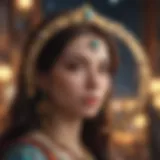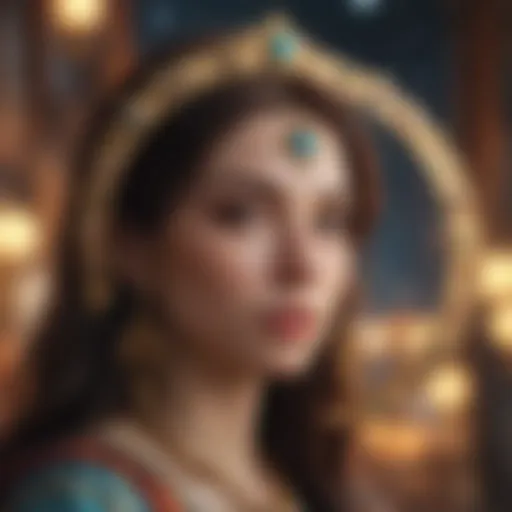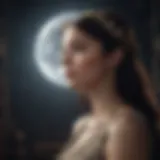A Beginner's Guide to Tarot Card Decks
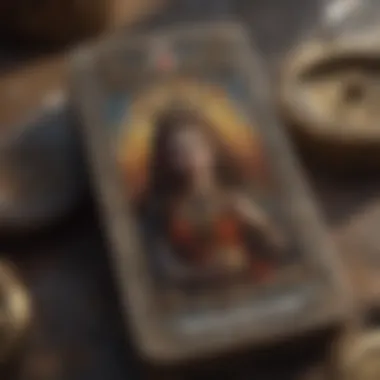

Intro
The world of tarot card decks invites exploration and understanding, especially for those just starting their journey. Tarot serves as a tool for divination, personal reflection, and spiritual guidance. As beginners step into this intricate realm, it is crucial to grasp the significant characteristics of tarot decks, how to choose the right one, and the fundamentals of interpreting the cards. This guide aims to provide a well-rounded overview to assist novices in navigating their initial experiences with tarot reading. Through careful examination of deck styles, symbolism, and usage tips, readers will gain the knowledge necessary for a meaningful connection with this ancient practice.
Understanding Tarot
The study of Tarot is not merely about card reading; it encompasses a deeper understanding of symbolic relationships and the human experience. This section aims to elucidate the importance of grasping Tarot fundamentals. Understanding Tarot offers practitioners various benefits. It fosters an appreciation for the intricate nature of the cards and creates a strong foundation for meaningful readings.
History of Tarot
Tarot cards have a rich history that traces back to the 15th century in Europe. Initially, they were used for playing games rather than divination. Over time, the spiritual and mystical aspects of Tarot gained prominence. By the late 18th century, Tarot began to be associated with esoteric traditions. Understanding this history is vital as it offers context for contemporary practices and interpretations of the cards. It shows how cultural shifts have shaped readings and the significance of the cards throughout history.
What Tarot Represents
Tarot is much more than a tool for fortune-telling. It represents a journey of self-discovery and reflection. Each card serves as a visual representation of archetypes, situations, and emotions present in our lives. By engaging with these cards, individuals can tap into deeper levels of intuition and insight. Recognizing what each card symbolizes can lead to more profound revelations during a reading. Thus, Tarot serves as a mirror, reflecting the inner workings of the psyche and facilitating personal growth.
Types of Tarot Decks
When entering the realm of Tarot, understanding the types of decks available is crucial. Each deck has its unique characteristics and can significantly impact the reading experience.
Traditional Tarot
Traditional Tarot decks, such as the Rider-Waite-Smith, are prevalent and widely recognized. They typically consist of 78 cards, divided into the Major and Minor Arcana. A key characteristic of traditional Tarot is its rich imagery and symbolism. This imagery contributes to an intuitive reading experience, allowing users to unlock meanings through visual cues. While popular, traditional decks may seem complex for beginners, yet their extensive interpretations and traditional structures make them a beneficial choice for foundational learning.
Lenormand Cards
Lenormand cards differ from Tarot in structure and use. These decks usually have 36 cards, each with straightforward symbols like the sun, moon, and stars. The simplicity of Lenormand cards allows for clear, concise readings. They focus more on direct answers and less on archetypal themes. For those seeking practical insights, Lenormand can be beneficial. However, it lacks the depth and complexity of traditional Tarot, which might discourage users looking for a more nuanced experience.
Oracle Decks
Oracle decks offer a flexible alternative to traditional Tarot. Unlike Tarot, they do not follow a specific structure or number of cards. Each oracle deck is unique, often reflecting the creator's vision or theme. They can be highly intuitive and allow for personal interpretation. This flexibility can be appealing for beginners. However, the lack of standardization means users may experience difficulty in establishing a consistent reading practice.
"Understanding different types of Tarot decks is essential for finding the right tool for personal exploration and growth."
In summary, diving into the world of Tarot requires an appreciation of its history, symbolism, and variety of decks. By understanding these foundational elements, beginners can better navigate their Tarot journey.
Choosing a Tarot Deck
Selecting a tarot deck is a pivotal moment for any beginner. The variety of decks available can be overwhelming. Each deck offers a unique perspective and aesthetic, thereby influencing the user's experience and insights drawn from readings. A well-chosen deck aligns with an individual’s personal style and intuition, creating a more engaging connection with the cards.
Art and Imagery
The art and imagery of a tarot deck are not just decorative elements; they are the visual language through which the cards communicate. Each card resonates with different emotional and symbolic meanings, so it is important to choose a deck that speaks to you on a deeper level. Look for illustrations that evoke feelings or thoughts that align with your understanding of the card meanings.
A deck's artwork can vary significantly, from traditional representations to abstract interpretations. For instance, the Rider-Waite Tarot is known for its rich imagery rooted in symbolism, while the Wild Unknown Tarot offers a more minimalist and modern approach. Consider how these differences impact your reading style. A deck that inspires you can enhance your confidence and clarity during readings, making the experience more meaningful.
Deck Size and Material
When choosing a tarot deck, the physical dimensions and material quality matter. A standard tarot card is usually around 2.75 x 4.75 inches. However, some decks are larger or smaller, which can affect how they are handled. Smaller decks may be easier to shuffle but can be harder to read if the artwork is not clear.
Material is equally significant. Most decks are made from cardstock, but the finish can vary. Glossy cards may offer a slick feel but could be distracting during readings. Matte cards often provide a better grip and minimize glare, enhancing focus. Personally handling different decks can reveal your preferences, making it easier to select the perfect deck for your practice.
Intuition and Connection
The final consideration in choosing a tarot deck revolves around intuition and personal connection. It is often said that a deck "chooses" its reader. This concept highlights the importance of feeling a bond with the cards. As you peruse different decks, pay attention to your immediate reactions. Do certain cards resonate with you? Do you feel compelled to draw specific cards?
Building a connection with your deck can involve a simple process of spending time with it. You might want to shuffle the cards or lay them out and observe your feelings about each one. This establishes a rapport that will enhance your readings. Ultimately, a deep personal connection to a deck can open gateways to insight, offering clarity in your tarot journey.
"The right deck will feel like an extension of yourself, guiding you through uncertainties."
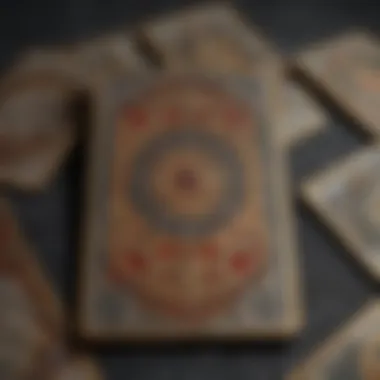

Popular Tarot Decks for Beginners
The world of tarot offers a wealth of decks, each with its own unique energy, art, and interpretations. For beginners, choosing the right deck can be a daunting task. This section simplifies the process by highlighting popular tarot decks that are well-suited for novices. Each of these decks carries distinct characteristics that can enhance learning and provide a solid foundation for tarot reading. Understanding these decks can help beginners connect more meaningfully with their readings.
Rider-Waite Tarot
The Rider-Waite Tarot is arguably the most famous tarot deck. Created by Arthur Edward Waite and illustrated by Pamela Colman Smith, it was first published in 1909. This deck is renowned for its rich imagery and symbolism, which serve as a helpful guide for beginners. Each card features intricate illustrations that convey deep meanings, making interpretations easier for those just starting out.
The deck consists of 78 cards, divided into the Major and Minor Arcana. The Major Arcana represents significant life themes, while the Minor Arcana deals with day-to-day experiences. The Rider-Waite Tarot also includes hands-on features, ideal for first-time users. It offers an accessible pathway to understanding tarot's nuanced messages.
Thoth Tarot
Developed by Aleister Crowley and painted by Lady Frieda Harris, the Thoth Tarot reflects a different approach than the Rider-Waite. Released in 1969, this deck delves into complex esoteric themes. The artwork is highly symbolic, making it appealing to those interested in traditional occult practices. The Thoth Tarot pack consists of 78 cards as well, incorporating elements from astrology, Kabbalah, and numerology.
While rich in depth, it may require more study than the Rider-Waite. For beginners who are keen on exploring the deeper meanings of tarot, the Thoth deck offers profound insights. It is important for new users to remember that engaging with this deck may demand more patience as they decode its intricate symbols.
Morgan-Greer Tarot
The Morgan-Greer Tarot is another excellent choice for beginners. Illustrated by Bill Greer and Lloyd Morgan, this deck is based on the Rider-Waite images but has a distinctive art style that is vibrant and striking. First published in 1979, the Morgan-Greer Tarot's visuals tend to draw users in intuitively, making it easier for them to form connections with the cards.
The cards in this deck also feature keywords along the bottom, which serve as prompts to aid interpretation. This feature is invaluable for beginners who may struggle with meanings at the start. With its rich imagery and straightforward approach, the Morgan-Greer Tarot is both engaging and instructive.
Wild Unknown Tarot
Created by Kim Krans, the Wild Unknown Tarot stands out for its modern and minimalist approach. First published in 2016, this deck combines delicate artwork with natural themes. The appeal of the Wild Unknown Tarot lies in its simplicity which may resonate well with beginners.
While it lacks elaborate symbolism compared to more traditional decks, it provides space for personal interpretations. Users are encouraged to reflect upon their emotions and thoughts when engaging with the cards. This intuitive approach can enhance the personal connection and understanding of tarot readings for novices.
Selecting one of these popular decks can facilitate a beginner’s journey into tarot. Each deck has its pros and cons, and the best choice ultimately depends on individual preferences and learning styles. No matter the choice made, the initial experience with tarot should be enlightening.
"The right tarot deck can vastly improve your understanding and enjoyment of tarot reading. Each card tells a story waiting to unfold."
As you embark on this journey, consider these popular options and assess what aligns with your interests and intuition.
Basic Structure of Tarot Decks
Understanding the basic structure of tarot decks is essential for beginners. It provides a foundational knowledge that can enhance the tarot reading experience. Tarot decks consist of two main parts: the Major Arcana and the Minor Arcana. Each plays a distinct role in readings and holds unique meanings.
The Major Arcana represents significant life themes and spiritual lessons. These cards can indicate major influences or turning points in a person's life. The archetypes within the Major Arcana often carry profound messages, allowing for deep introspection and understanding of one's journey.
The Minor Arcana delves into the day-to-day experiences we encounter. It offers insights into the mundane aspects of our lives, breaking it down into four suits: Cups, Swords, Pentacles, and Wands. Each suit corresponds to different elements of human experience, enriching the interpretation of simpler questions and insights.
Knowing how these arcs fit within the tarot spectrum helps readers interpret the cards' messages more accurately. The structure further informs the choice of spreads and allows the reader to grasp the context of their queries better.
Major Arcana
The Major Arcana consists of 22 cards, starting with The Fool and ending with The World. Each card is rich with symbolism and meaning, offering insights into significant life events or experiences. This section is vital because it represents key life lessons, driving forces, and the spiritual evolution of the querent. These cards require careful interpretation, as their implications may influence the entire reading.
Minor Arcana
Cups
Cups represent emotions, relationships, and connections. They deal with matters of the heart. This makes the suit highly relevant for inquiries about love, friendship, and family dynamics. One key characteristic of Cups is their ability to reflect the emotional state of the querent. Many beginners find them beneficial due to their direct connections to personal feelings. However, they can also be tricky; great emotional understanding is required to interpret them correctly.
Swords
Swords symbolize the intellect, thoughts, and communication. This suit deals with mental challenges, conflicts, and decisions. The key characteristic of Swords is their focus on truth and clarity. It can be an excellent choice for beginners interested in exploring their ideas and analyzing situations. A unique feature of these cards is that while they can provide clarity, they may also represent conflicts or barriers that must be navigated. Interpretation often requires discernment.
Pentacles
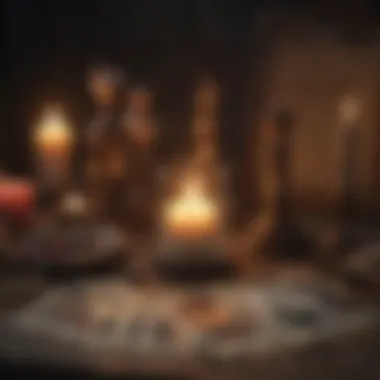

Pentacles are associated with material aspects, like finances, work, and health. Their main focus is on the physical and material realm. This makes Pentacles a relevant choice for beginners interested in practical matters. The key characteristic is groundedness, providing stability in readings. They can indicate success or challenges in financial matters. However, an overemphasis on material concerns can lead to a narrow understanding of a reading.
Wands
Wands embody creativity, passion, and action. This suit focuses on growth and ambition. Wands can be a beneficial choice for those drawn to their energetic and dynamic nature. A unique feature of Wands is their representation of potential; they inspire action and forward movement. However, this can generate impatience or impulsiveness if not properly managed. Understanding the balance these cards require is essential for accurate interpretation.
Engaging with these structures allows beginners to connect various themes and messages within tarot readings. A thorough grasp of the Major and Minor Arcana creates a framework for conducting meaningful and insightful readings.
Card Meanings and Interpretations
Understanding card meanings and their interpretations is fundamental for anyone who wishes to delve into the world of tarot reading. This section will clarify what each card signifies, how those meanings can vary based on context, and the impact of reversed cards. Readers will learn that not only does comprehension of card meanings deepen one's tarot practice, but it also enhances personal insight and intuitive connection to the cards.
Understanding Card Meanings
Each tarot card carries a set of meanings, influenced by its imagery, symbolism, and position in a spread. The Major Arcana cards, for example, often reflect significant life themes and spiritual lessons, while the Minor Arcana cards deal with everyday issues and experiences. The importance here lies in exploring both traditional interpretations and personal insights.
For beginners, familiarizing oneself with the traditional meanings can offer a solid foundation. It is valuable to consult popular resources like books or online guides, such as those found on Wikipedia or Britannica. Over time, one can incorporate personal feelings and experiences into the interpretations to create a richer understanding.
Reversed Cards
Reversed cards in tarot reading often generate debate among practitioners. A reversed card can indicate blocked energies, oppositional forces, or the need to consider an inverted perspective on situations. Importantly, it provides insight into the nuances of a reading. When you encounter a reversed card, consider asking reflective questions. What might be the lesson? How does this energy contrast with the upright meaning of the card?
Some practitioners choose to ignore reversals altogether. However, acknowledging them can lead to deeper readings. Their presence can reveal hidden aspects or challenges one might face.
"Understanding reversals can provide depth to readings, allowing practitioners to interrogate obstacles or internal conflicts that might not be immediately apparent."
Personal Interpretations
Personal interpretations are the pinnacle of tarot reading. While tarot offers a framework of meanings, it is the individual reader's intuition and life experiences that truly enrich the experience. Each card can resonate differently depending on the reader’s background, feelings, and present circumstances. It is beneficial to keep a journal to document thoughts and reactions to each card over time. This practice not only aids in memory and recall but also encourages a personal connection with each card. Using a tarot journal, one can record card draws, personal reflections, and any emotions encountered during readings. To fully embrace the nuance of tarot, allow yourself to evolve in your interpretations over time.
In summary, the journey of learning tarot card meanings and interpretations is continuous. Each card serves as a mirror reflecting one's life, challenges, and growth. Thus, embracing both traditional meanings and personal insights allows for a more profound engagement with the tarot.
Conducting Your First Tarot Reading
Conducting your first tarot reading is a significant step in your journey as a beginner. It allows you to apply the knowledge you have gained about tarot decks and card meanings in a practical setting. This section emphasizes the importance of preparation, the choice of spreads, and the formulation of inquiries. Understanding these aspects can enhance your reading experience, providing clearer insights and more meaningful connections with the tarot.
Preparing Your Space
Creating an appropriate space for your tarot reading is important. A calm and inviting atmosphere can foster concentration and intuition. Consider clearing a specific area where you can read without interruptions. This space should feel comfortable and safe. Some may choose to add personal touches like candles, crystals, or objects that inspire tranquility.
Being mindful of ambient noise is also essential. Soft music or nature sounds can help set the mood. Ensure that the lighting is optimal. A well-lit area contributes to better visibility of the cards during the reading.
Selecting a Spread
Selecting a spread is a crucial part of conducting a tarot reading. Different spreads offer unique insights based on how many cards are drawn and their arrangement.
Three-Card Spread
The Three-Card Spread is well-known for its simplicity and flexibility. Its structure allows for a range of interpretations. Typically, the first card represents the past, the second represents the present, and the third symbolizes the future. This layout provides a clear narrative and is especially beneficial for those new to tarot.
A unique feature of the Three-Card Spread is its adaptability. Depending on your question, you can assign different meanings to each position. However, it may not provide extensive detail compared to more complex spreads.
Celtic Cross
The Celtic Cross is a popular and robust spread that offers a comprehensive view of a situation. It consists of ten cards laid out in a specific arrangement. Each card has its unique position, each representing different aspects such as influences, challenges, and outcome. This spread can help provide depth in readings, making it a favored choice.
However, one disadvantage of the Celtic Cross is its complexity. Beginners might find it challenging to interpret all ten cards accurately. Those unfamiliar with tarot may need more time to grasp the symbolism inherent in this spread.
Single Card Draw
The Single Card Draw is perhaps the most straightforward method for conducting a tarot reading. Drawing one card allows for immediate focus on a specific question or concern. This method is particularly helpful for quick insights or daily pulls.
Its key characteristic is its directness. The Single Card Draw removes any unnecessary complications. Beginners often find this method appealing due to its simplicity.
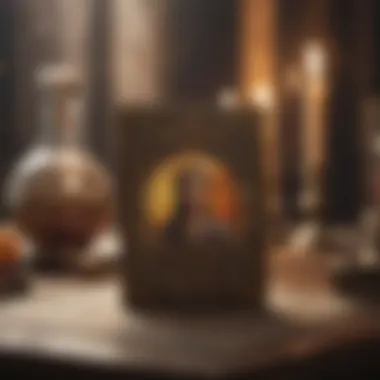

However, the limitation lies in the lack of context. One card may not always provide a comprehensive answer, especially for complex queries.
Formulating Questions
Formulating questions is essential to guide your reading effectively. The questions should be open-ended, encouraging a more insightful response. Instead of asking, "Will I achieve this goal?" consider rephrasing it to "What do I need to know about pursuing this goal?" This approach invites a broader exploration of your situation, fostering deeper understanding.
In summary, preparing your space, selecting an appropriate spread, and formulating insightful questions contribute significantly to your experience with tarot reading. Approach your first reading with intention and openness, allowing the cards to guide you.
After the Reading
After completing a tarot reading, the work is not over. This phase, often overlooked, holds significant importance for both the reader and the querent. Reflection and documentation are essential practices that deepen the understanding and effectiveness of tarot as a divinatory tool. The insights gained during the reading can fade quickly, so taking the time to process and archive these experiences can lead to greater clarity and development in tarot practice. This section will explore the importance of reflecting on the reading and maintaining a tarot journal, emphasizing their roles in personal growth and insight.
Reflecting on the Reading
Reflection allows the reader to dig deeper into the meanings unveiled during the tarot session. After a reading, it's crucial to take a few moments—whether alone or with the querent—to contemplate the messages conveyed by the cards. Here are some key considerations for effective reflection:
- Analyze Card Interpretations: Spend time thinking about the meanings of the specific cards drawn. Consider how they relate to the querent's question or situation. Each card can hold different meanings based on position and surrounding cards.
- Emotional Reactions: Acknowledge your and the querent's emotional responses during the reading. Emotions can provide significant insights that might not have been immediately apparent during the session.
- Identify Patterns: Look for themes or repeating symbols within the reading. Patterns can reveal underlying issues or areas for growth that require attention.
"Reflecting after a reading is as crucial as the reading itself. It's in the reflection that true understanding blossoms."
By intentionally engaging in this reflective practice, you can enhance your connection to the cards and increase your intuition as a reader.
Keeping a Tarot Journal
Maintaining a tarot journal is an invaluable tool for any tarot enthusiast. This journal serves as a personal record of readings, observations, and growth over time. Here are some essential elements to consider when keeping a tarot journal:
- Document Readings: Write down the date, cards drawn, and the questions asked. Consistent documentation supports growth and patterns you may notice over time.
- Personal Insights and Discoveries: Include your thoughts about the reading. What resonated? What felt unclear? Your personal interpretations will evolve, making this a crucial aspect of your learning journey.
- Track Progress: Over time, the journal will help you observe your development. Review past entries to recognize how your interpretations and skills have matured.
To maintain clarity and consistency in your journaling, consider the following format:
- Date of Reading
- Cards Drawn
- Questions Asked
- Insights and Interpretations
- Reflection
By actively participating in these practices, readers can deepen their understanding of tarot, enriching their connection to the cards and improving their reading abilities. Through reflection and documentation, each tarot experience becomes a stepping stone to greater wisdom. All of this contributes towards a more profound journey into the art of tarot.
Further Resources
When diving into the world of tarot, the journey extends beyond just choosing a deck and doing readings. Further resources play a pivotal role in deepening understanding, providing support, and enhancing skills in tarot reading. These resources can be invaluable for beginners looking to develop a more nuanced approach to tarot.
Books for Beginners
Books offer a wealth of knowledge for those new to tarot. They serve several purposes:
- Foundational Knowledge: They provide essential information about tarot history, meanings, and reading techniques. Some popular beginner's books include The Ultimate Guide to Tarot by Liz Dean and Tarot for the Beginner by Barbara Moore.
- Diverse Perspectives: Different authors bring various interpretations and styles to tarot reading. This diversity helps readers find approaches that resonate with them.
- Practical Exercises: Many beginner-friendly books include exercises, spreads, and journal prompts. These practical elements encourage active engagement with the cards.
Books lay an essential foundation for understanding tarot more thoroughly. Starting with these resources can significantly boost confidence in readings.
Online Communities
Engaging with online communities can enhance your tarot experience in several ways:
- Shared Experiences: Platforms like Reddit or Facebook have groups where members share their readings, ask questions, and discuss interpretations. This communal learning fosters a sense of belonging among new readers.
- Access to Experts: Many communities feature experienced tarologists offering insights and advice on complex readings or card meanings. This mentor-like support can be invaluable.
- Resource Sharing: Users often share their favorite books, websites, or articles, which can lead to discovering additional learning materials.
Online communities are essential for networking and learning. They also provide a space for individuals to share their unique perspectives on tarot.
Tarot Workshops
Participating in tarot workshops allows enthusiasts to delve deeper into their practice. The benefits include:
- Hands-On Learning: Workshops often include practical exercises and live readings, helping attendees grasp concepts better than through self-study.
- Direct Feedback: Instructors can provide immediate feedback on participants’ readings, clarifying any confusion and accelerating skill development.
- Networking Opportunities: Workshops connect like-minded individuals, creating opportunities for future discussions, collaborations, or friendships.
Engaging in tarot workshops cultivates practical knowledge and creates opportunities for personal growth.
Finding a supportive community and reliable resources can significantly ease the journey into tarot.
Collectively, these further resources—books, online communities, and workshops—play a crucial role in enhancing the learning curve for newcomers in the tarot realm. They provide much-needed support, advice, and additional pathways to explore this intricate art.
